Your cart is currently empty!
Month: June 2014
-
Summer Morning
This last day of June, the hydrangea are starting to bloom. In Japan, hydrangea bloom during the rainy season in June and July. Growing up I associated their flowers with rain and snails. When I close my eyes and think of hydrangeas, they are always wet with drops of fresh rain water dripping off them. Here, hydrangea bloom during the dry season from July through August. They are rarely wet and in this land of no snails, you never see a snail sliding across a wet hydrangea leaf.
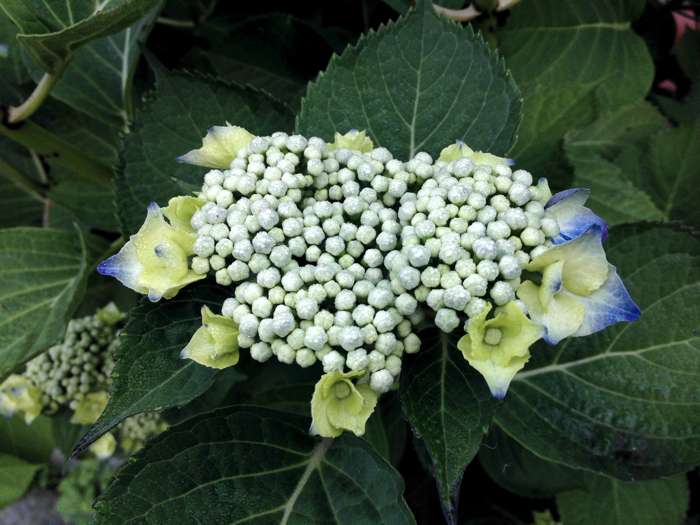
South of Tokyo in Kamakura you’ll find Meigetsu-in, a Zen temple founded in 1383 also known as the Hydrangea Temple 紫陽花寺 because of its many hydrangeas. There are some 2,500 hydrangea on the temple grounds with 80 to 90 percent of them an old variety known as Princess Hydrangea. On busy days when the hydrangea are in bloom, the line of visitors waiting to get into the temple grounds can stretch for a third of a mile.

There are no lines here to see the hydrangea. Only a handful of people have ever seen the hydrangea bloom at A Man and His Hoe®. Actually, more chickens than people have seen them in bloom, though this morning, the chickens are more interested in pecking through the duckweed I pulled out of the pond for them. Maybe they will pause and admire the hydrangea when they are in full bloom and they have had their fill of duckweed, tadpoles, and waterbugs.
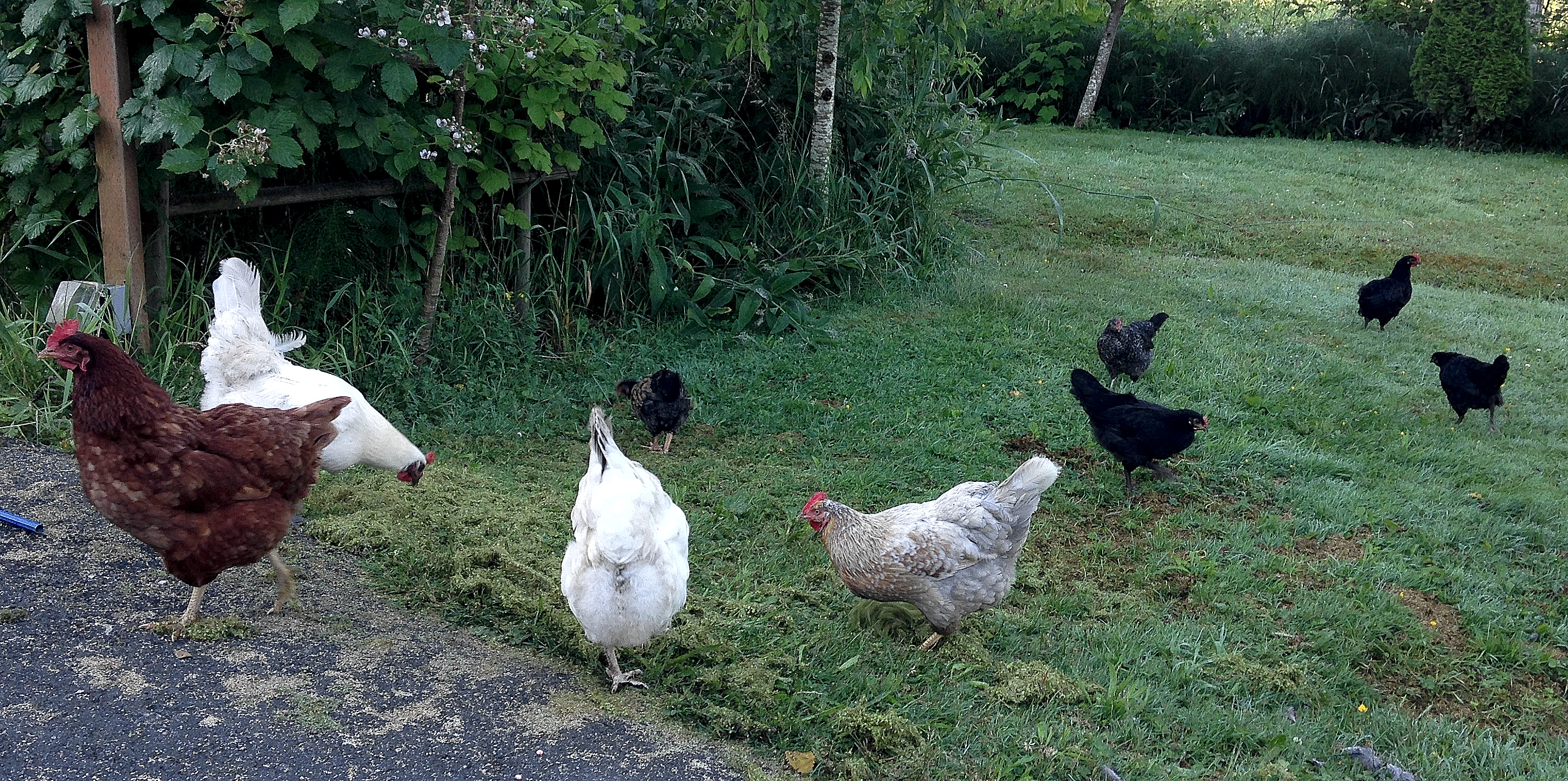
-
Importance of Love
Looking at two cats snuggled together on a chair, it’s easy to see that love is important to cats. In her book Animal Madness, Laurel Braitman states that animals think, feel, and experience the same emotions that people do. Live with animals and it’s as obvious as saying that the sky is blue.
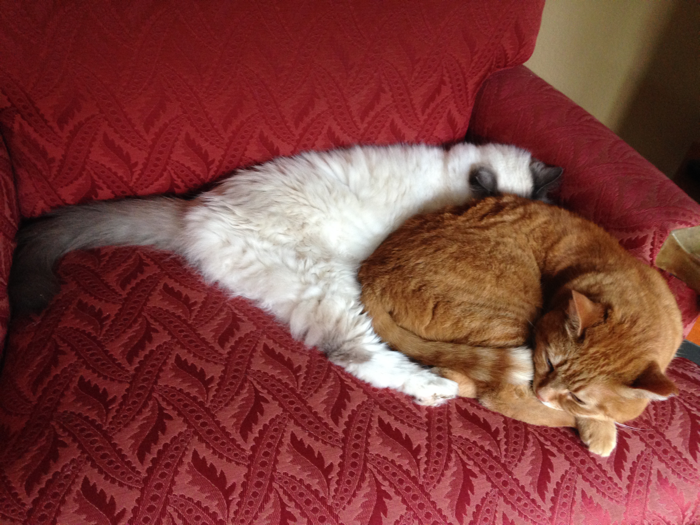
It’s not only cats and dogs which thrive when loved, so do little chicks. They thrive under the watchful eyes of their caring mothers. When they are snuggled under their mother’s feathers, safe and warm, listening to her heartbeat, you wonder what they are feeling. And what is she feeling when there are little ones gathered under her wings? Is she feeling the same warmth a human parent feels when their children are snuggled in their lap, listening to them read a children’s book?
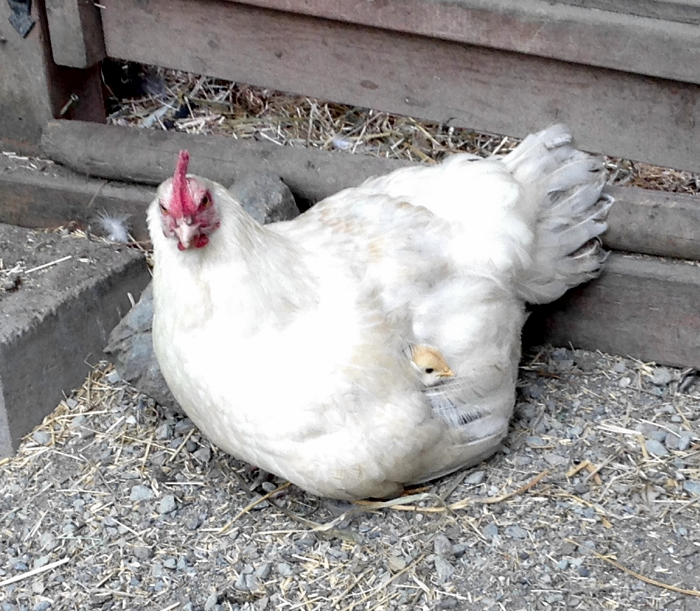
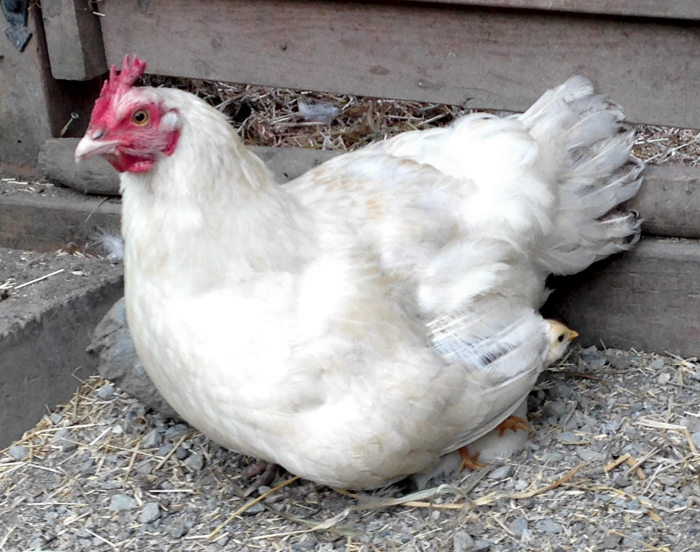

Researches warn against anthropomorphizing animal behavior. And yet, since we are animals ourselves, and have very distant common ancestors, just as we share many of the same physical characteristics such as hearts, lungs, legs, two eyes, etc., wouldn’t it be reasonable that we share many of the same emotions? For example, love is essential to the survival of every mammal and bird species. Without at least one parent’s concern for it’s offspring, all these species would quickly go extinct. Their offspring would quickly die off without their parents looking out for them.
It would seem rather specious to think that many of our emotional states developed only after homo sapiens arose. It would seem more plausible that our emotional states go far back down the evolutionary chain and began hundreds of millions of years ago in the distant past. They were as important to the survival of distant species as they are to us today.
-
Out of the Garden Today – June 28, 2014
Shopping for groceries in a supermarket can be stressful. All those people. All that noise. So many decisions to make. Which head of lettuce is the freshest? Which carrots are the sweetest?
Gathering vegetables for dinner in the garden is much less stressful. Few vegetables are so humorous as garlic scapes. They curl into the most curious and funny shapes. Why do they do that?
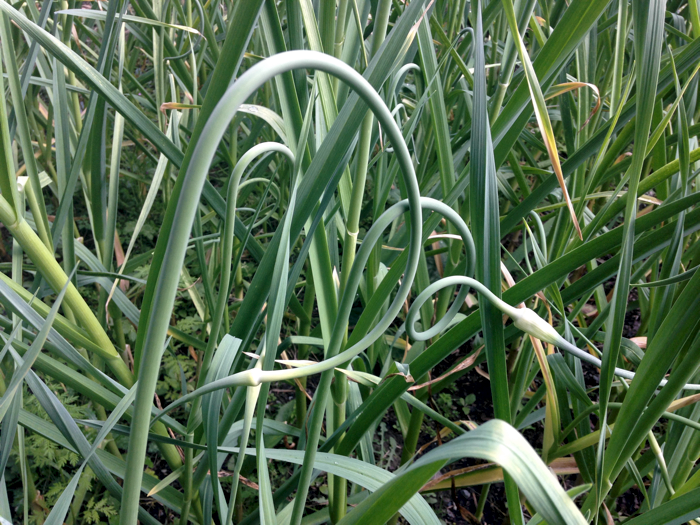
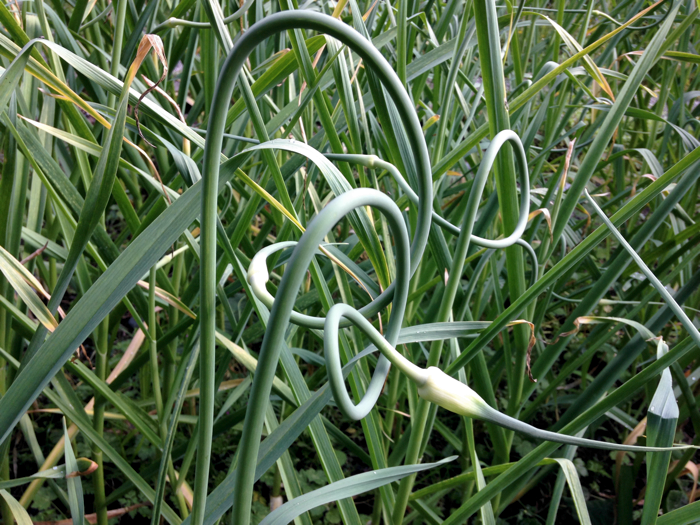
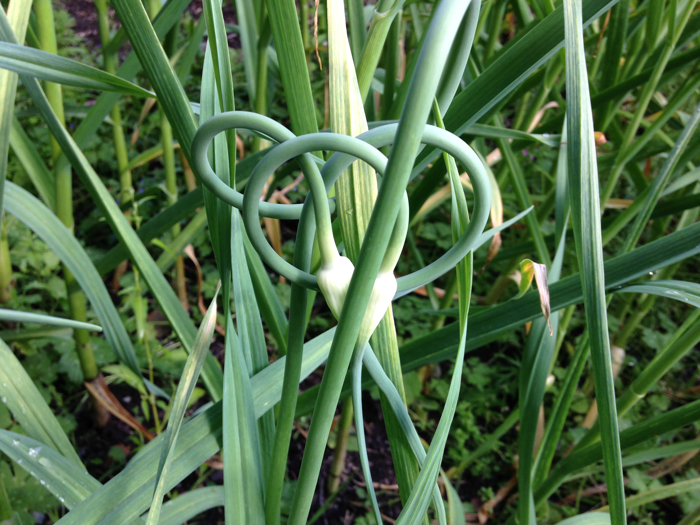

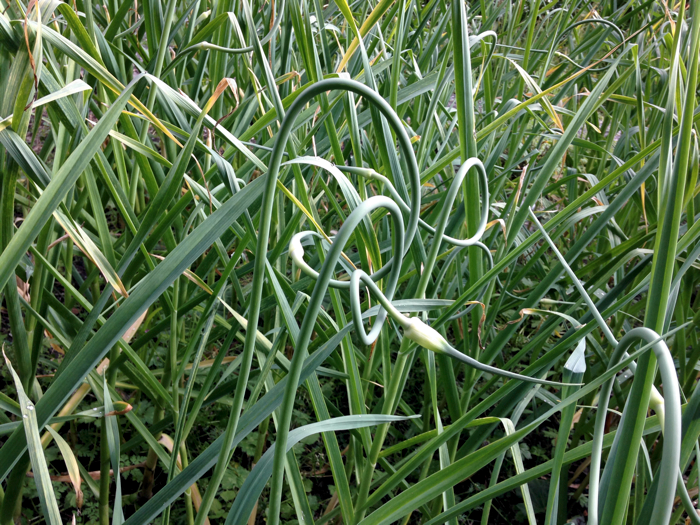
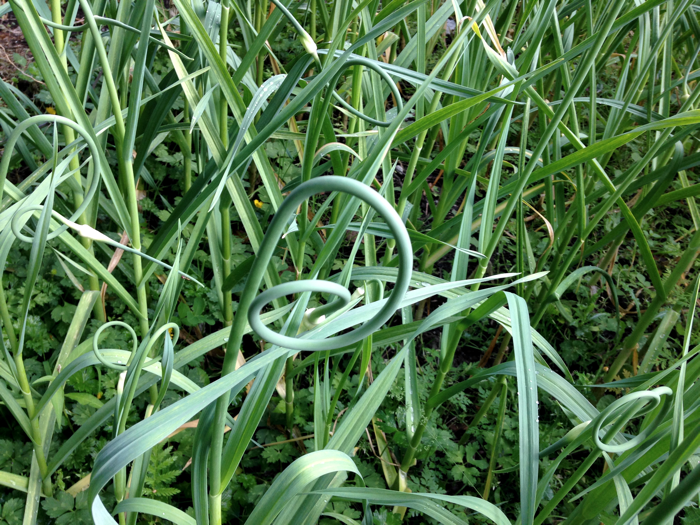
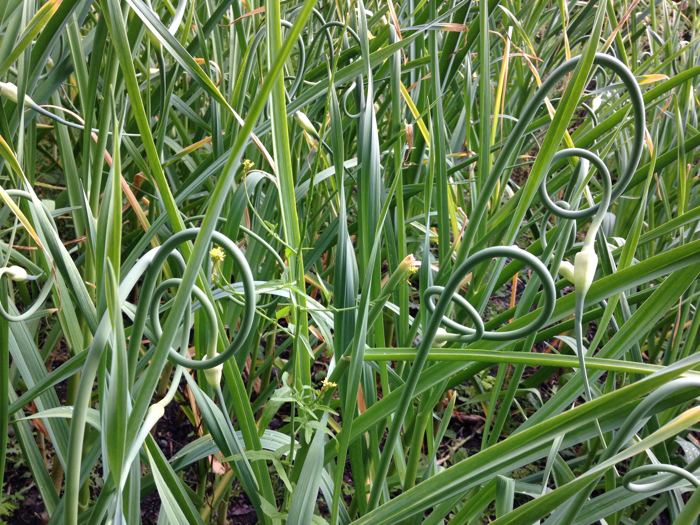
Going through a garlic field pulling garlic scapes is far less stressful than pushing a shopping cart through a busy supermarket. After pulling a mountain of garlic scapes, it’s on to the cherry trees.
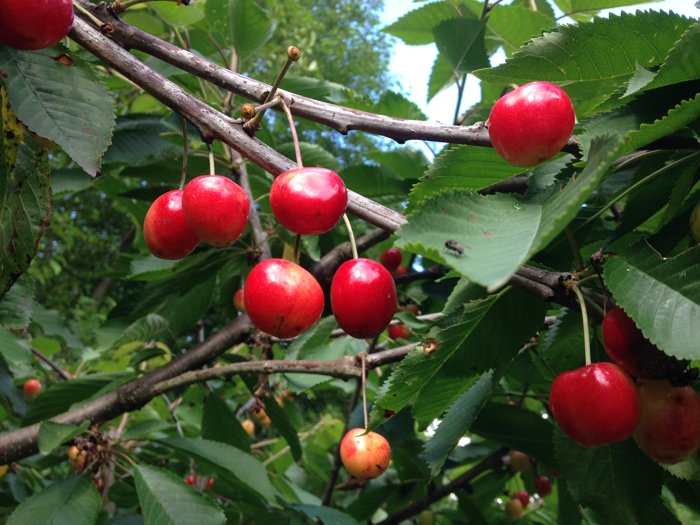
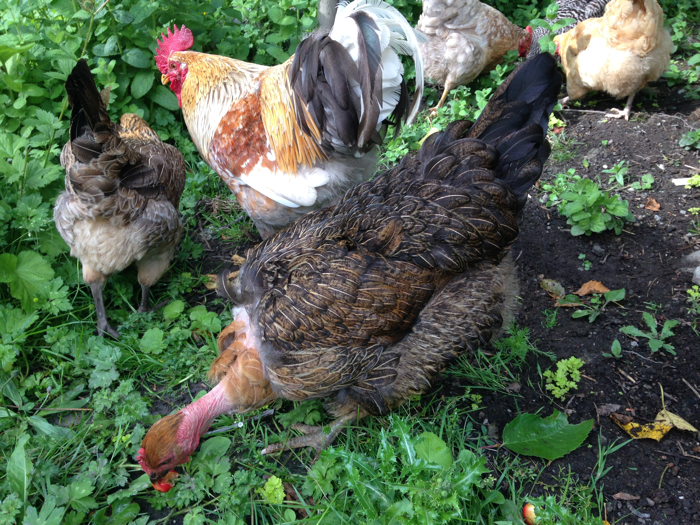
The cherries are ripening early this year, and the birds are leaving them alone for a change. There are plenty for the table and extra to scatter for the chickens. They love sweet fruits. After the cherry trees, it’s on to pick some raspberries and greens. On the way, there is the first Shasta Daisy of the season to smile at.

And here is tonight’s grocery section. It doesn’t take long to fill my “grocery cart”. There’s no shortage of good things to eat tonight.

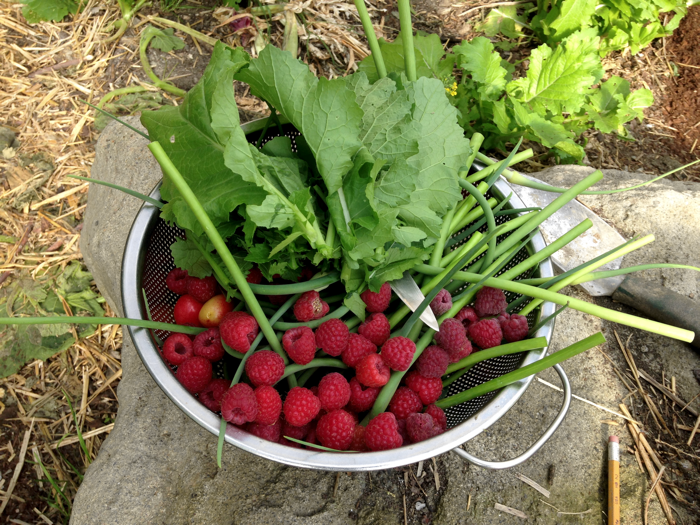
Washed and ready, there are plenty of good things to make a summer evening meal. There is no going hungry tonight.

So what do I do with garlic scapes? One way I like to make them is to cut them into one to two inch pieces and then sauté them in garlic oil until tender, which is what I’m doing tonight. They are also good roasted, used in soups, eaten raw if very tender, added to omelets, and on and on. What do they taste like? They are like string beans with a hint of garlic.
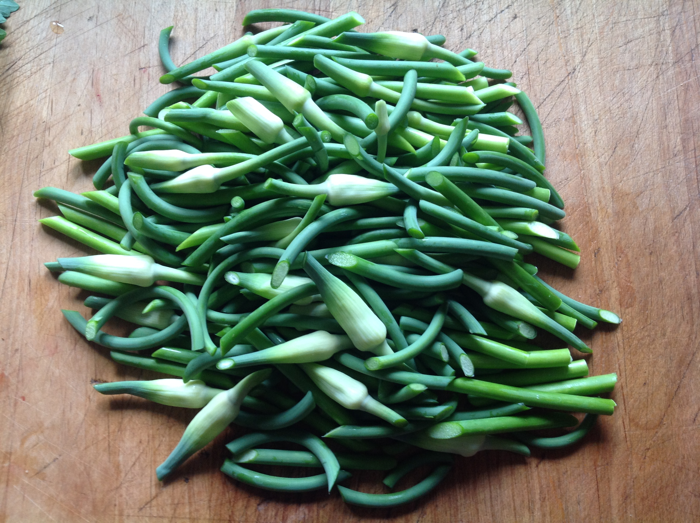
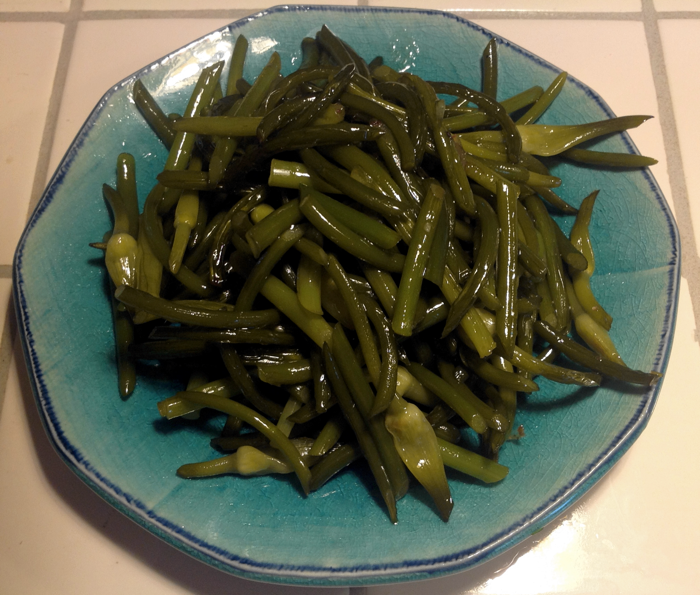
-
Solving a Problem
I have a problem to solve and the solution involves building a simple box I can hang on a wall.
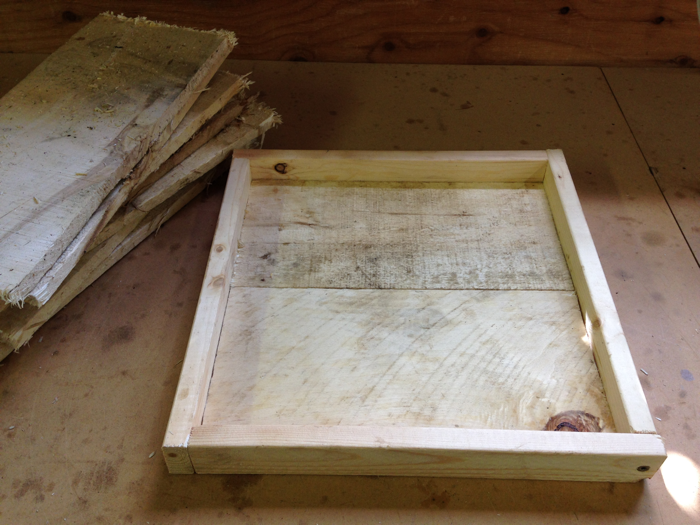
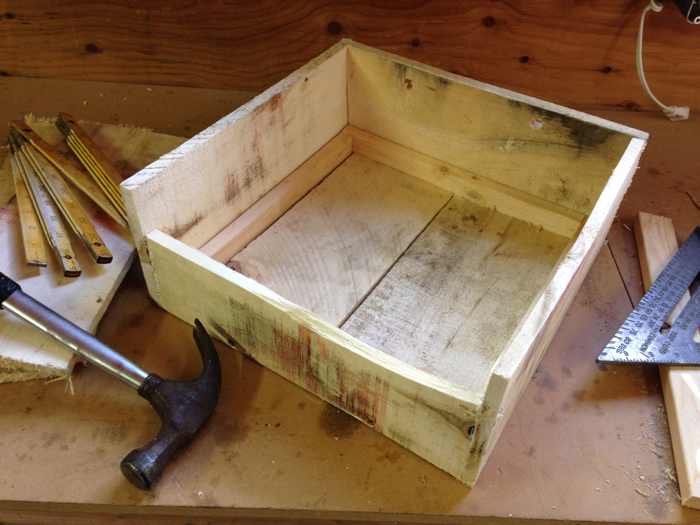
And here is where the problem is, inside the hay shed.
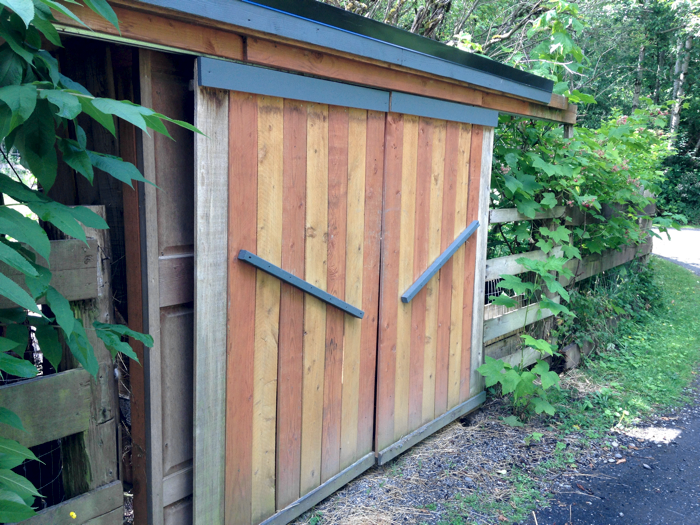
Two hens have decided that tops of hay bales are the perfect spot to hatch a clutch of eggs. For three nights, I’ve tried moving them into a more appropriate brooding place. When it is dark, the hens will stay calm and you can wrap them in a towel and move them easily. Sometimes, they will take to the new location, but more often, once a hen has decided on a spot to hatch a clutch of eggs, even dynamite won’t make her budge.

With the brooding box ready, I’ve marked the eggs to put under the hen. Once a hen goes broody, she stops laying eggs, and this hen is sitting on a single egg laid by another hen this morning.
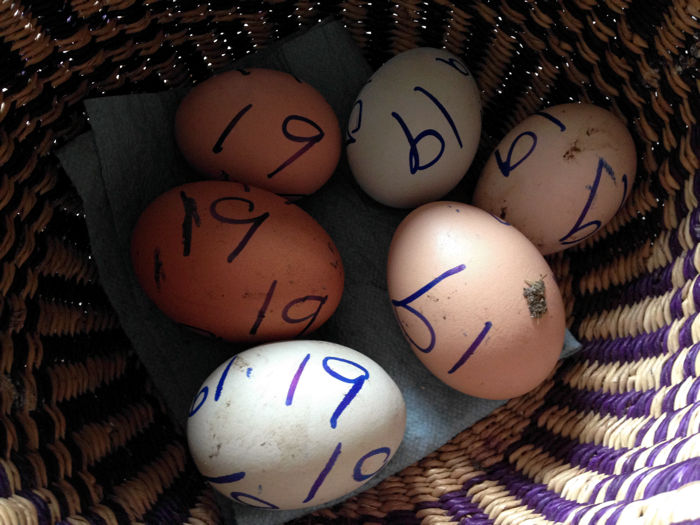
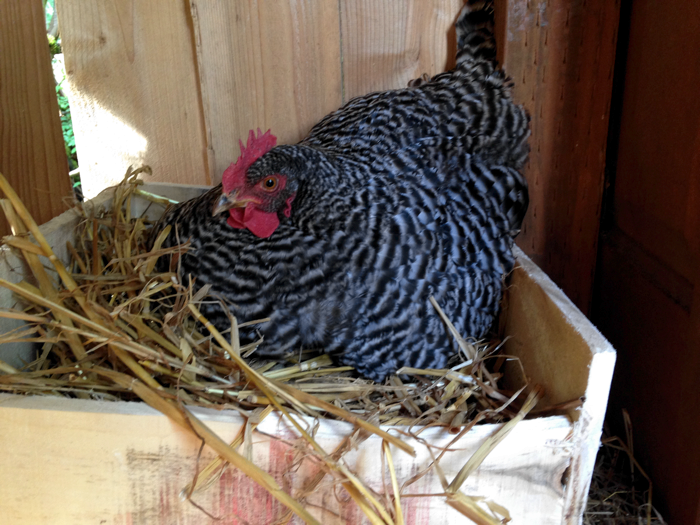
With the brooding box fastened to the wall above the bale of hay, the hen is back on her nest with a full clutch of eggs under her to hatch. When the chicks hatch in three weeks, it will be easy to move her and her new chicks by lifting the box off the wall and putting it in a quiet spot in the nursery.
Tomorrow I will make a brooding box for the other hen who is sitting on a bale of hay on the other side of the hay shed. She is a feisty one and will draw blood if you reach under her. She will make a very protective mother.
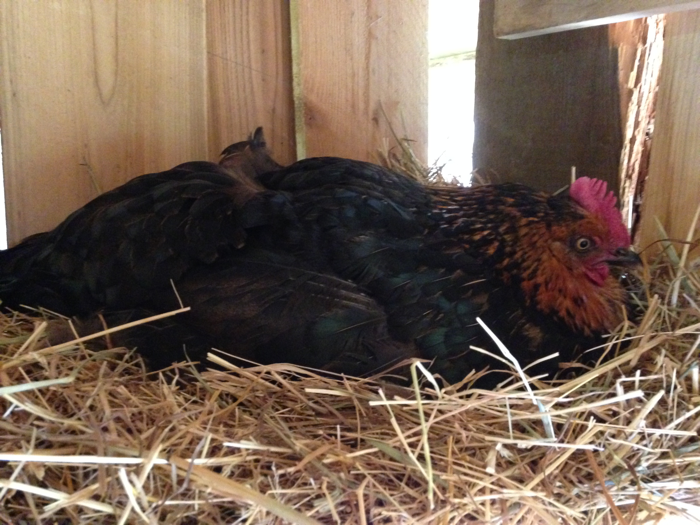
-
Strike a Pose
Of all the chickens, Lucky is the most photogenic, and she seems to know it. She loves to pose. It’s almost as if she is saying, “How about this look? What if I move my head to the side?” She is also the first hen to come check what I am doing in the garden when I go out to weed. See Lucky’s story ~ why we call her Lucky.
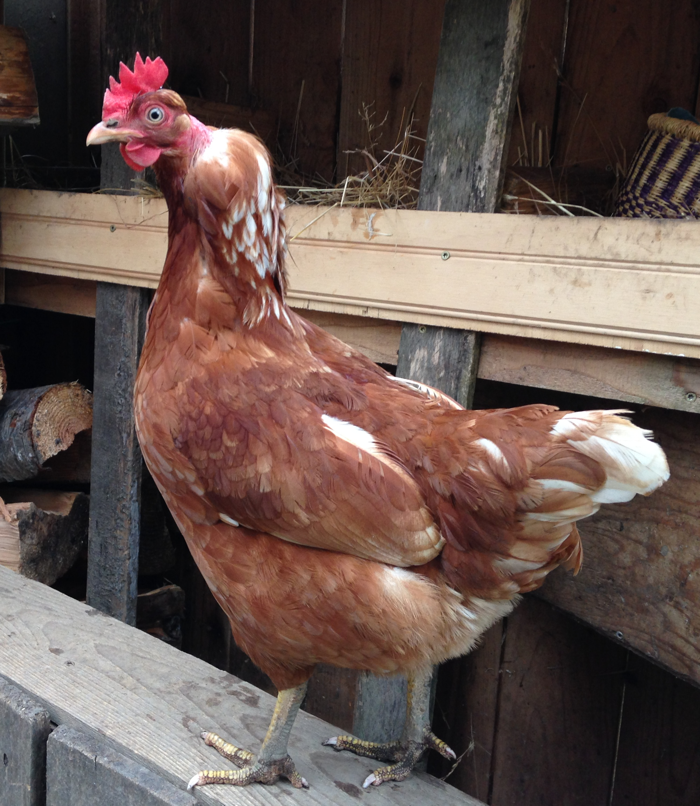
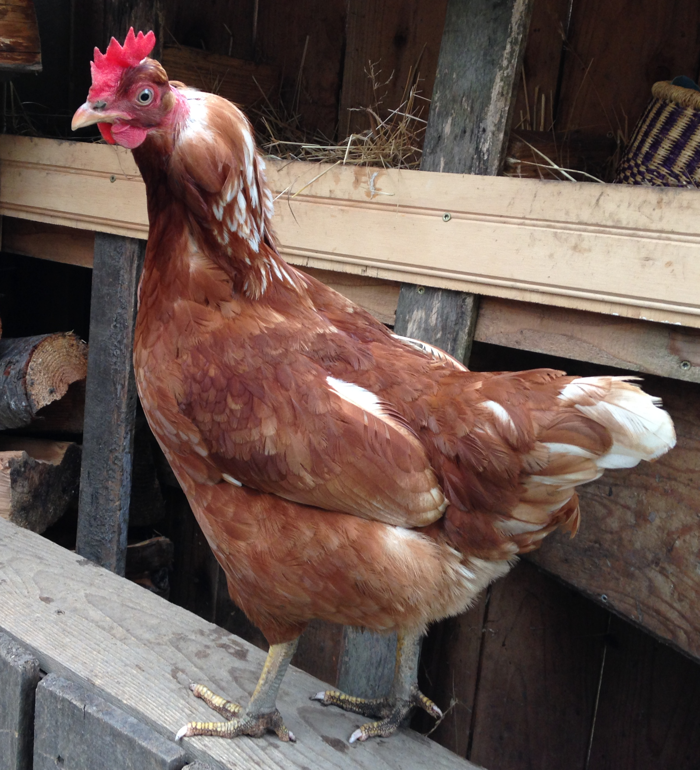
On the other hand, brooding hens are in no mood to pose. They stay as still as possible, hoping that you won’t see them, and that you will move on and leave them in peace.
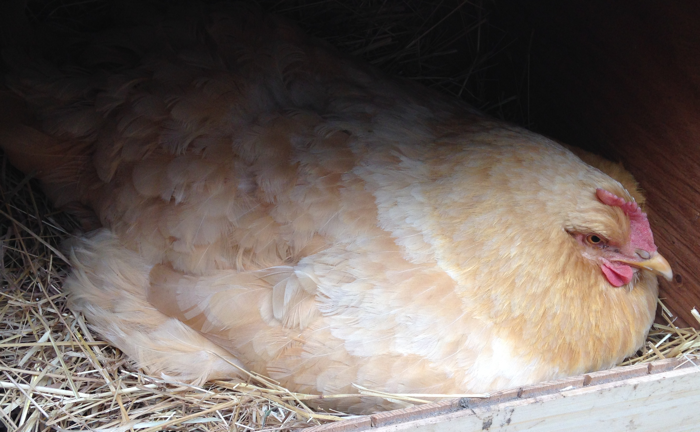

In one of the hoop houses, the squash are starting to set. I”m not sure what kind of squash this is. I bought one several months ago. It was a squarish squash with a bit of a waist. I planted some of the seeds and will soon have a supply to last through the fall and possibly into winter. You can see the waist in the forming squash.

The two mothers sharing two chicks are doing fine. It’s been over a week since their chicks hatched. The chicks go freely from one hen to the other. Sometimes the hens scold each other when they aren’t happy with the other’s child rearing methods, but for the most part they get along.

Two Moms|Summer Musings|Interracial Lesbian Mothers|More on the Interracial Lesbian Moms